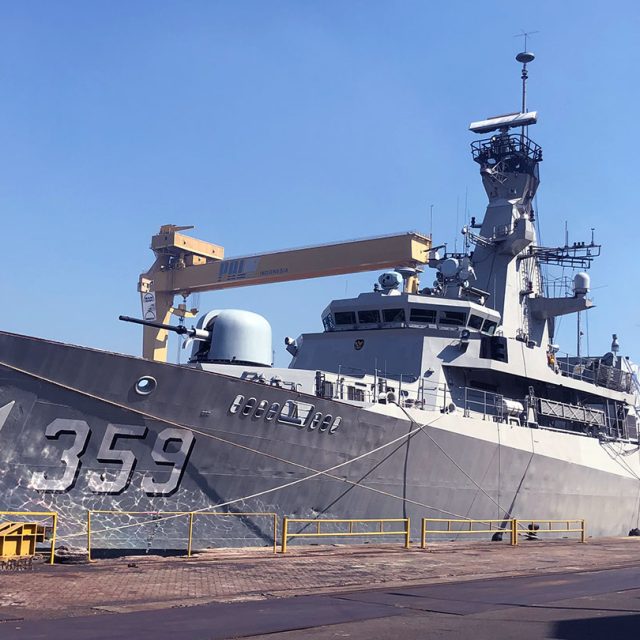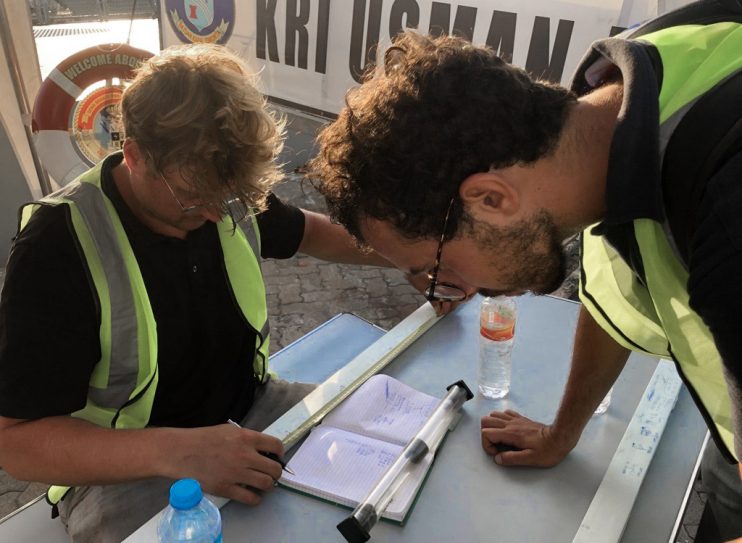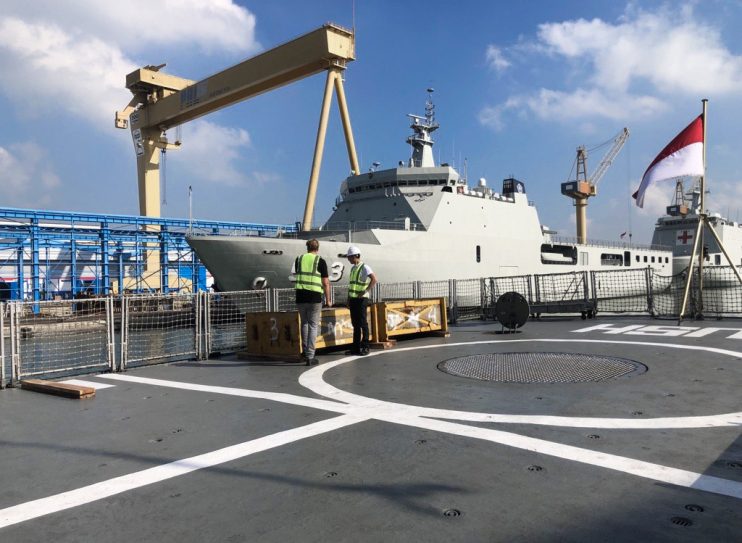
Modification works in full swing for the complete modernisation of the KRI Usman Harun frigate’s mission systems
This summer, after many months of engineering, the Indonesian multi-role light frigate (MRLF) KRI Usman Harun was delivered to the PT PAL construction site. All mission systems are being modernised to fulfil the frigate’s mission profile with optimum performance. Nevesbu, in close cooperation with prime contractor PT LEN Industri, conducted the platform systems integration engineering and will also provide yard support during the conversion. To enable the conversion, demolition works to remove existing mission systems and constructions from the vessel are currently underway.

Ensuring that all systems on board function as intended
PT LEN Industri contracted Nevesbu for the platform systems integration. As the platform systems integrator, Nevesbu is responsible for all necessary engineering to integrate the state-of-the-art mission systems into the frigate while ensuring the system and all subsystems on board function as intended. This includes defining the demolition works and designing of modifications to the vessel’s structure, platform utility systems, foundations, cable routings and room arrangements in accordance with the specified requirements. We will also monitor the vessel’s stability and energy balances.
Integrating new systems into an existing vessel is always a complex puzzle
Prior to the design work, we first map out the current situation by performing inspections on board the vessel. We detailed the existing situation on board the KRI Usman Harun using 3D laser scanning. Collecting data through 3D laser scanning gives us precision insight into how the vessel is arranged and the exact location of all systems, cables and pipes. This information is key to fitting all the new equipment into the existing environment properly.
Integrating new systems into an existing vessel is always a complex puzzle. It is much more complex than simply removing the old system and installing the new one in its place. There is much to consider. Foundations often need adapting and new mission systems also require changes in auxiliary systems, cables, pipes, etc. Cabling must not be susceptible to interference and should be spaced adequately to avoid interference. Simultaneously, the operational layout must be as efficient as possible and the energy balance and stability of the vessel must be monitored. Naval vessels must also satisfy strict requirements regarding rigidity during the firing of ammunition, shock resistance in the event of explosions and the overall strength of the structures. When developing the design, we continuously pursue an ideal balance between strict requirements and optimal efficiency for the crew in terms of operability and maintainability.


Performing an inclination test to evaluate the vessel’s stability
With a view to the vessel’s stability, our design also includes a critical examination of the correct weight distribution. In August, an inclination test was performed at the PT PAL yard in Indonesia to determine the stability of the KRI Usman Harun. With the modification currently in full swing, a specialist from Nevesbu is permanently present at the yard to provide technical support during the implementation. The modernisation of the KRI Usman Harun is expected to be completed by the end of 2023 and will ensure the Indonesian fleet remains one of the most advanced in the region.
Would you like to know more about this project or Nevesbu's naval vessel services and experience?
